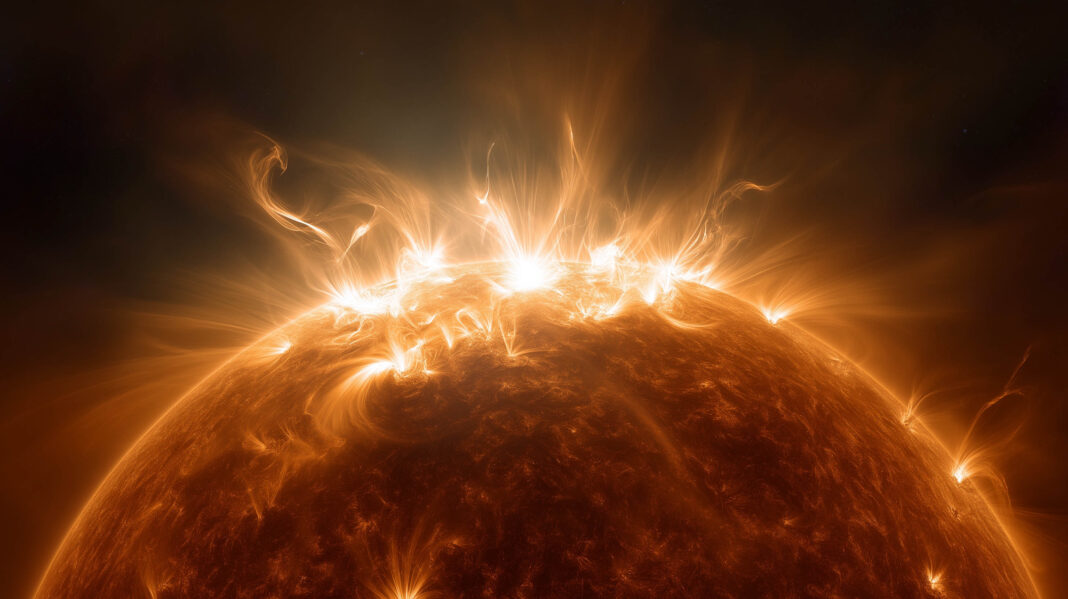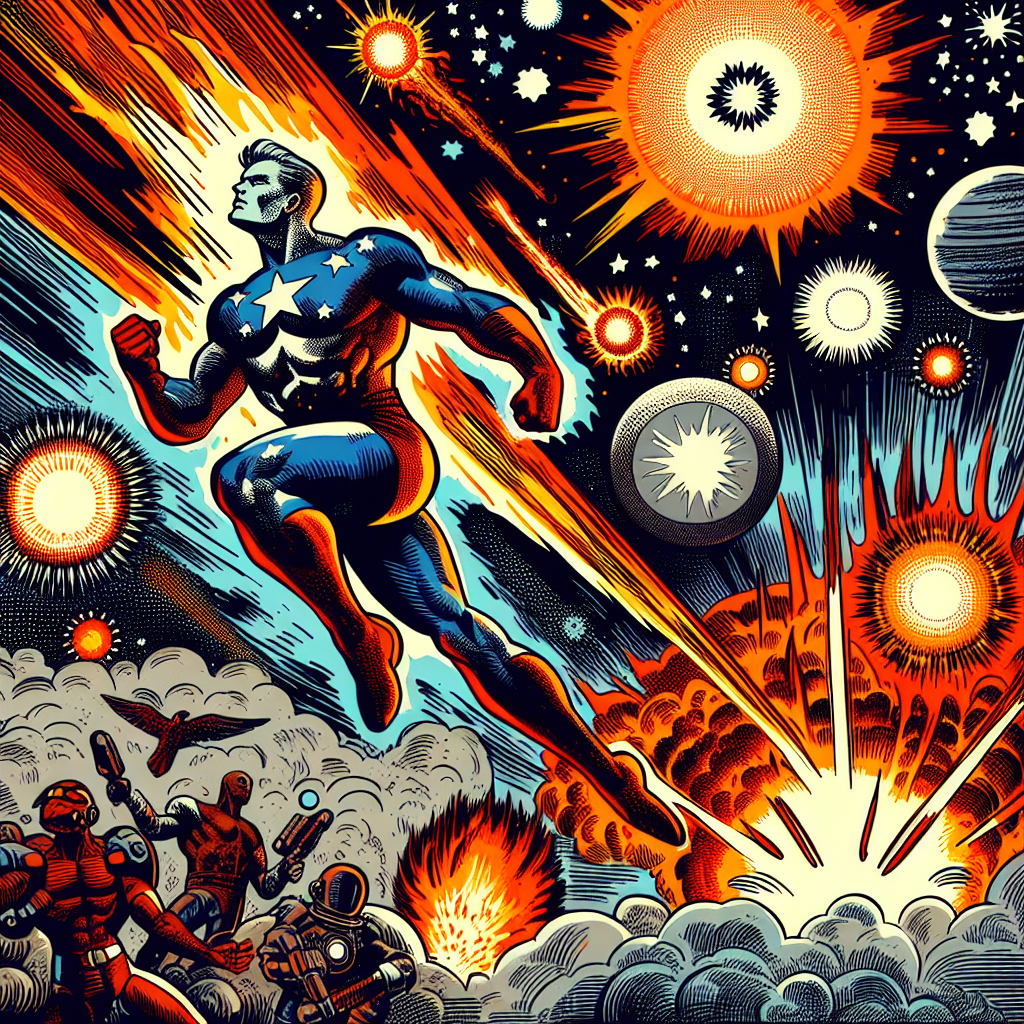An Unlucky Orbit
Imagine a planet caught in a cosmic boxing match. This gas giant, HIP 67522 b, is orbiting its young star so closely that it’s practically asking for trouble. As it whips around its star, it triggers massive flares that put our sun’s tantrums to shame. These flares stretch millions of miles into space, threatening to strip the planet’s atmosphere faster than a bad haircut in a windstorm.
The culprit here is the star’s magnetic field. This young star is the kind that flares up when it’s annoyed, and having a planet so close is like poking a bear. According to researchers, the planet’s proximity stirs up the star’s magnetic field, causing these colossal flares. It’s a phenomenon that hasn’t been seen before, and it’s got scientists buzzing with excitement.
Meet the Cosmic Players
HIP 67522, the star in question, is a bit heftier than our sun and sits about 407 light-years away in the constellation Centaurus. It’s a mere 17 million years old—a newborn in cosmic terms—compared to our solar system’s 4.5 billion years. Its planetary companion, HIP 67522 b, is almost the size of Jupiter but weighs in at only 5% of Jupiter’s mass, making it one of the puffiest exoplanets around.
This planet orbits its star five times closer than Mercury does to our sun, completing a full orbit in just seven days. That’s like running a marathon every week without breaking a sweat. But this close proximity is a double-edged sword, as it seems to be the trigger for those massive stellar flares.
The Science of Stellar Flares
Flares are intense eruptions of electromagnetic radiation from a star’s outer atmosphere, the corona. The interaction between HIP 67522 b and its star’s magnetic field is thought to cause these flares. The planet might be stirring up waves in the star’s magnetic field, much like a boat creating waves in a lake.
These waves, known as Alfvén waves, are named after Hannes Alfvén, a Nobel Prize-winning physicist. When these waves hit the star’s corona, they trigger flares in the star’s magnetic loops, releasing stored energy. It’s a process that’s never been observed before at this intensity, making it a groundbreaking discovery in the field of astrophysics.
The Future of HIP 67522 b
So, what does the future hold for HIP 67522 b? The flares might heat and inflate its atmosphere, causing lighter elements to escape into space. Over time, this could strip the planet down to a sub-Neptune, a gas planet smaller than Neptune but rich in heavier elements.
Researchers used data from NASA’s TESS and the European Space Agency’s CHEOPS to study this phenomenon. While HIP 67522 b’s situation might seem dire, it’s a testament to the diversity of exoplanets. It’s a harsh cosmic lesson, but one that offers valuable insights into the complex dynamics of young planetary systems.
Key Facts Worth Knowing
- •💡 HIP 67522 b is nearly the size of Jupiter but only 5% of its mass.
- •💡 The star HIP 67522 is about 17 million years old, much younger than our sun.
- •💡 Flares can extend millions of miles into space, affecting a planet’s atmosphere.
- •💡 Alfvén waves, named after Hannes Alfvén, are key to understanding stellar flares.
- •💡 HIP 67522 b orbits its star five times closer than Mercury orbits the sun.



